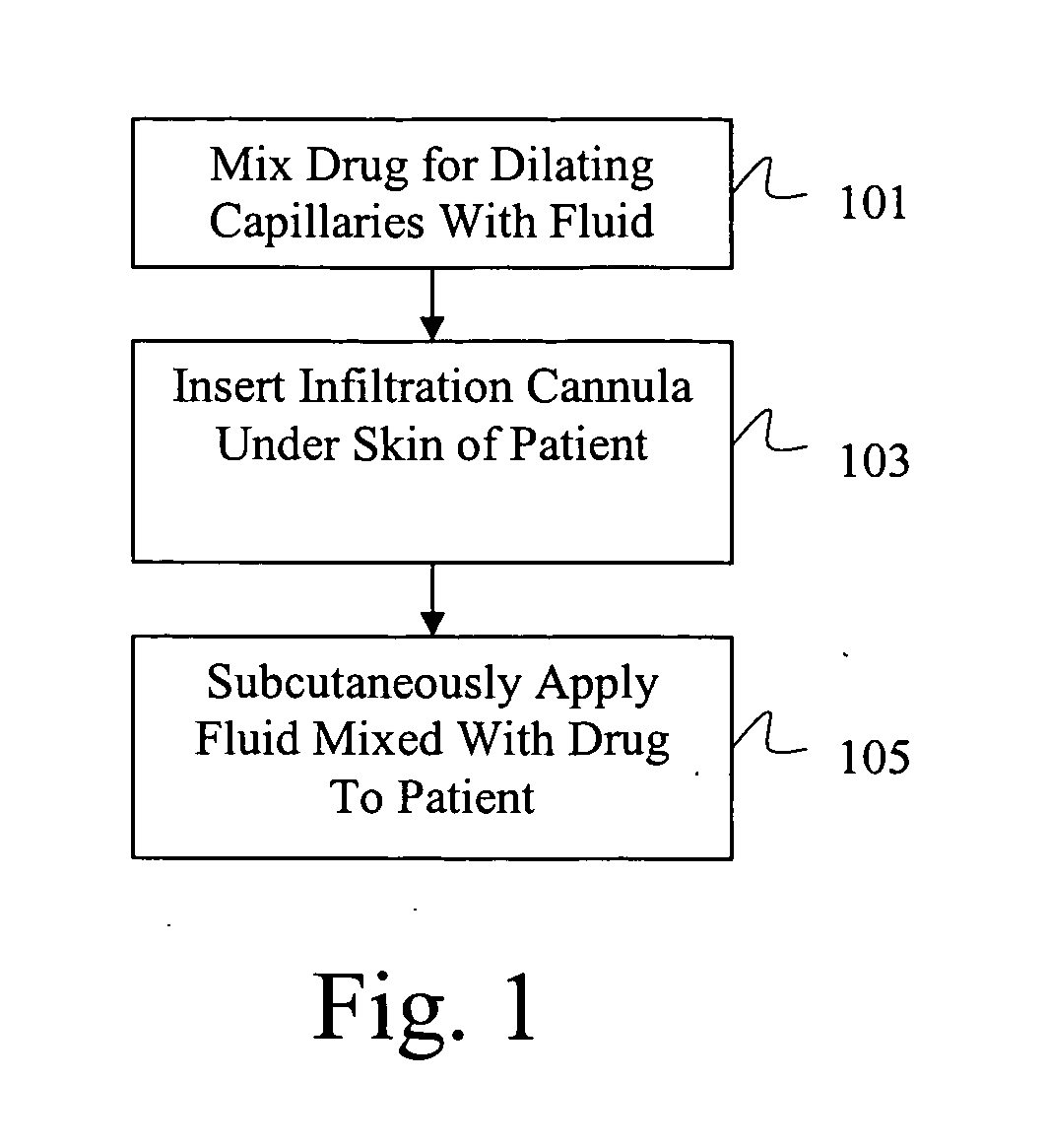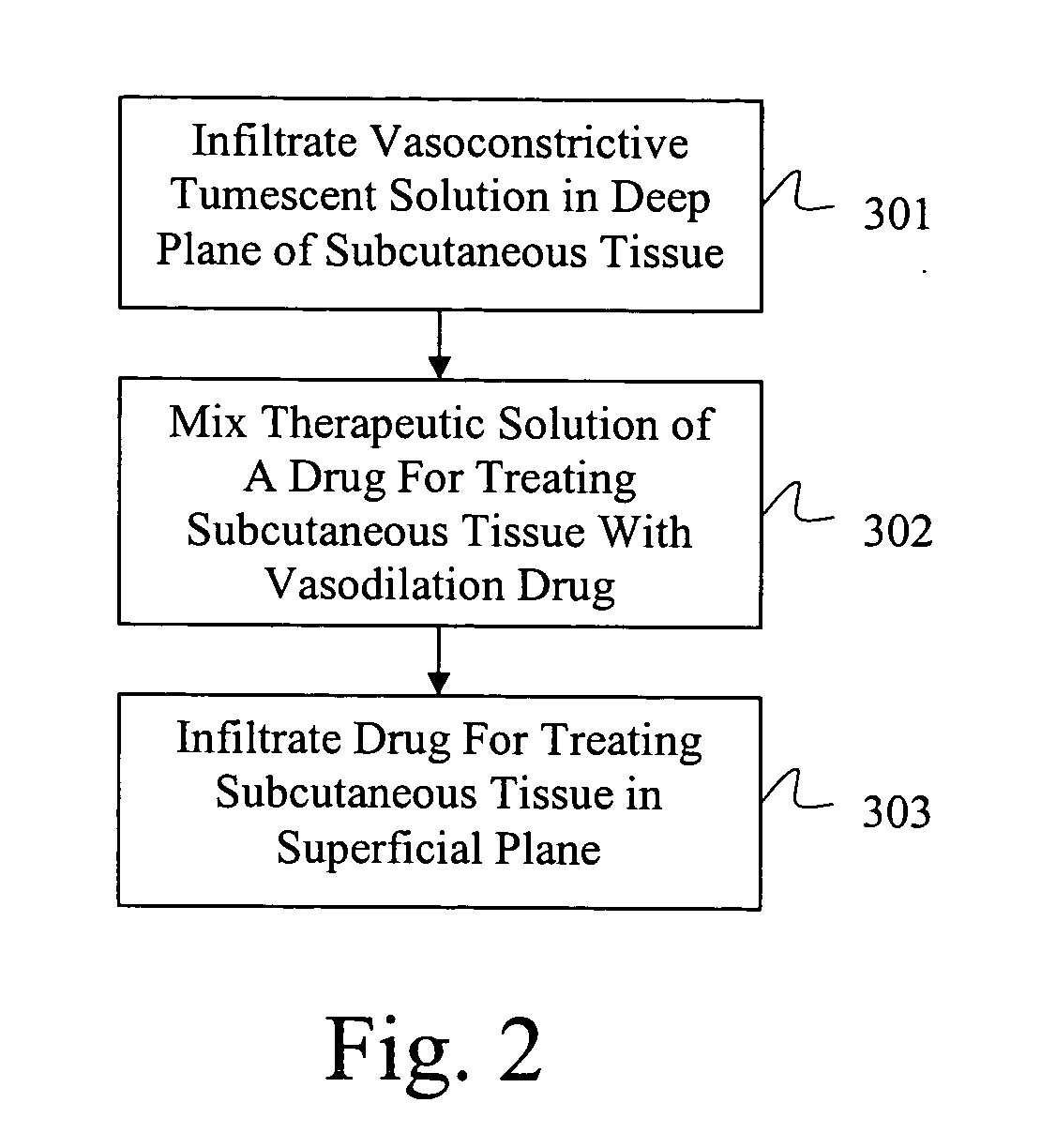Drug delivery system for accelerated subcutaneous absorption
a technology of accelerated subcutaneous absorption and delivery system, which is applied in the direction of biocide, heterocyclic compound active ingredients, peptide/protein ingredients, etc., can solve the problems of difficult or impossible iv infusion, inability to administer drugs, and substantial clinical skills, so as to prevent or delay the absorption of the second drug, and increase the absorption rate of the therapeutic drug
- Summary
- Abstract
- Description
- Claims
- Application Information
AI Technical Summary
Benefits of technology
Problems solved by technology
Method used
Image
Examples
Embodiment Construction
[0025] Referring now to the drawings wherein the showings are for purpose of illustrating preferred embodiments of the present invention only, and not for purposes of limiting the same, FIG. 1, illustrates the method of the present invention for accelerating subcutaneous absorption. Such method can be applied in various clinical conditions under which accelerated systemic or topical delivery of a specific fluid or drug is required. In addition, the method provided by the present invention can be easily performed by a layman in locations remote from specialized or technically demanding medical equipment without the requirement of special clinical skills. In step 101, a drug that is operative to cause capillary vasodilatation or vasodilatation of subcutaneous blood vessels is mixed with a fluid or a solution of a pharmacologic drug required by the patient.
[0026] The fluid or the solution of pharmacologic drug may include a crystalloid solution or a dilute solution of pharmacologic dr...
PUM
| Property | Measurement | Unit |
|---|---|---|
| concentration | aaaaa | aaaaa |
| dilute solution | aaaaa | aaaaa |
| volume | aaaaa | aaaaa |
Abstract
Description
Claims
Application Information
 Login to View More
Login to View More - R&D
- Intellectual Property
- Life Sciences
- Materials
- Tech Scout
- Unparalleled Data Quality
- Higher Quality Content
- 60% Fewer Hallucinations
Browse by: Latest US Patents, China's latest patents, Technical Efficacy Thesaurus, Application Domain, Technology Topic, Popular Technical Reports.
© 2025 PatSnap. All rights reserved.Legal|Privacy policy|Modern Slavery Act Transparency Statement|Sitemap|About US| Contact US: help@patsnap.com


